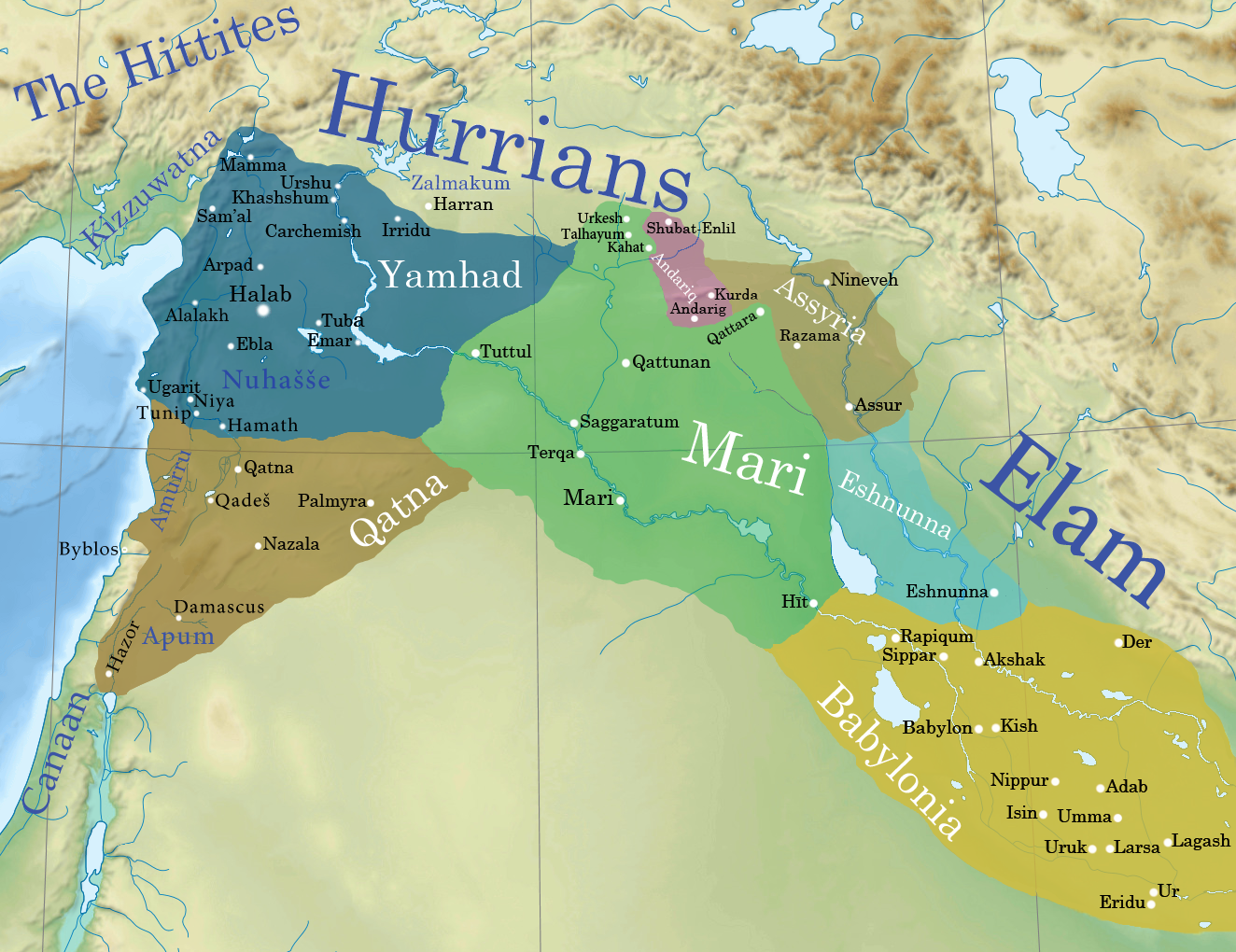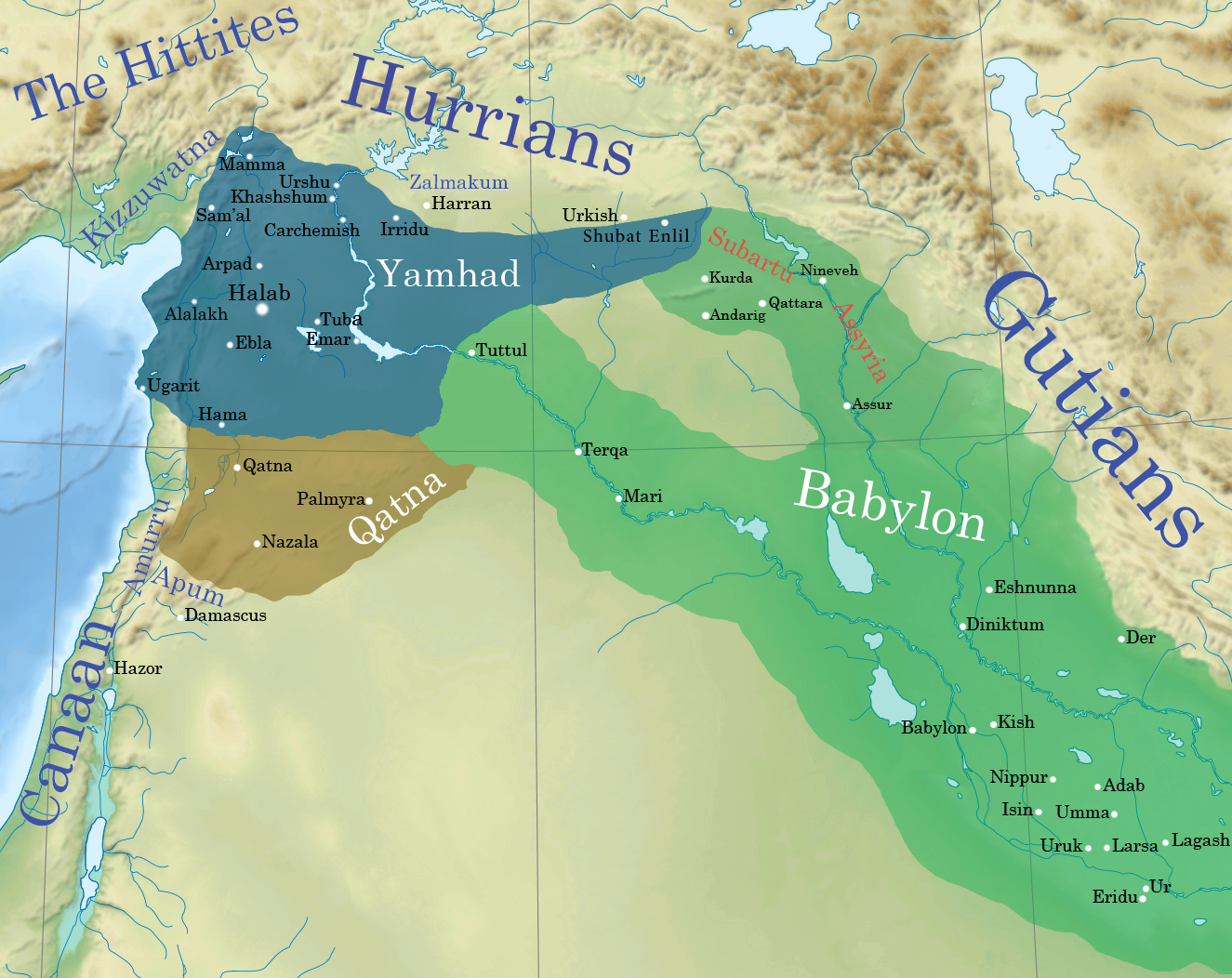|
Naram-Suen Of Eshnunna
Naram-Suen (also transcribed Narām-Sîn, Naram-Sin) was a king who ruled over Eshnunna for at least nine years during the later 19th century BCE, during its brief time of political power. He is known to be the son of Ipiq-Adad II, king of Eshnunna, and a contemporary of Shamshi-Adad I, king of the Kingdom of Upper Mesopotamia. An inscription praying for the king's peace was found in Kythira. References See also *Naram-Sin of Akkad *Naram-Sin of Assyria Naram-Sin, or Narām-Sîn or –Suen, inscribed in cuneiform on contemporary seal impressions as d''na-ra-am-''dEN.ZU, had been the "waklum" (ugula, Overseer) or "'' Išši’ak Aššur''" (énsi d''a-šùr'', Steward of Ashur) of the city-state ... Kings of Eshnunna {{AncientNearEast-bio-stub ... [...More Info...] [...Related Items...] OR: [Wikipedia] [Google] [Baidu] |
Eshnunna
Eshnunna (modern Tell Asmar in Diyala Governorate, Iraq) was an ancient Sumerian (and later Akkadian) city and city-state in central Mesopotamia 12.6 miles northwest of Tell Agrab and 15 miles northwest of Tell Ishchali. Although situated in the Diyala Valley north-west of Sumer proper, the city nonetheless belonged securely within the Sumerian cultural milieu. It is sometimes, in archaeological papers, called Ashnunnak or Tuplias,. The tutelary deity of the city was Tishpak (Tišpak) (having replaced Ninazu) though other gods, including Sin, Adad, and Inanna of Kititum were also worshiped there. The personal goddess of the rulers were Belet-Šuḫnir and Belet-Terraban. History Early Bronze Inhabited since the Jemdet Nasr period, around 3000 BC, Eshnunna was a major city during the Early Dynastic period of Mesopotamia. It is known, from cuneiform records and excavations, that the city was occupied in the Akkadian period though its extent was noticeably less than it reache ... [...More Info...] [...Related Items...] OR: [Wikipedia] [Google] [Baidu] |
Shamshi-Adad I
Shamshi-Adad ( akk, Šamši-Adad; Amorite: ''Shamshi-Addu''), ruled 1808–1776 BC, was an Amorite warlord and conqueror who had conquered lands across much of Syria, Anatolia, and Upper Mesopotamia.Some of the Mari letters addressed to Shamsi-Adad by his son can be found in the Mari Letters section of Rise Shamshi-Adad I inherited the throne in Ekallatum from Ila-kabkabu (fl. c. 1836 BC – c. 1833 BC). Ila-kabkabu is mentioned as the father of Shamshi-Adad I in the "Assyrian King List" (AKL); a similar name (not necessarily the same figure) is listed in the preceding section of the AKL among the “kings whose fathers are known”. However, Shamshi-Adad I did not inherit the Assyrian throne from his father but was instead a conqueror. Ila-kabkabu had been an Amorite king not of Assur (Aššur) (in Assyria) but of Ekallatum. According to the '' Mari Eponyms Chronicle'', Ila-kabkabu seized Shuprum (c. 1790 BC), then Shamshi-Adad I “entered his father's house” (Shamshi-Adad I ... [...More Info...] [...Related Items...] OR: [Wikipedia] [Google] [Baidu] |
Kythira
Kythira (, ; el, Κύθηρα, , also transliterated as Cythera, Kythera and Kithira) is an Greek islands, island in Greece lying opposite the south-eastern tip of the Peloponnese peninsula. It is traditionally listed as one of the seven main Ionian Islands, although it is distant from the main group. Administratively, it belongs to the Islands (regional unit), Islands regional unit, which is part of the Attica (region), Attica region, despite its distance from the Saronic Islands, around which the rest of Attica is centered. As a municipality, it includes the island of Antikythera to the south. The island is strategically located between the Greek mainland and Crete, and from ancient times until the mid 19th century was a crossroads of merchants, sailors, and conquerors. As such, it has had a long and varied history and has been influenced by many civilizations and cultures. This is reflected in its architecture (a blend of traditional, Aegean Sea, Aegean and Venice, Venetian el ... [...More Info...] [...Related Items...] OR: [Wikipedia] [Google] [Baidu] |
Naram-Sin Of Akkad
Naram-Sin, also transcribed Narām-Sîn or Naram-Suen ( akk, : '' DNa-ra-am D Sîn'', meaning "Beloved of the Moon God Sîn", the "𒀭" being a silent honorific for "Divine"), was a ruler of the Akkadian Empire, who reigned c. 2254–2218 BC (middle chronology), and was the third successor and grandson of King Sargon of Akkad. Under Naram-Sin the empire reached its maximum strength. He was the first Mesopotamian king known to have claimed divinity for himself, taking the title "God of Akkad", and the first to claim the title "King of the Four Quarters, King of the Universe". As part of that he became city god of Akkade in the same way Enlil was city god of Nippur. Biography Naram-Sin was born as a son of Manishtushu. He was thus a nephew of King Rimush and grandson of Sargon and Tashlultum. Naram-Sin's aunt was the High Priestess En-hedu-ana. To be fully correct, rather than Naram-Sin or Naram-Suen "in Old Akkadian, the name in question should rather be reconstructed as Nar ... [...More Info...] [...Related Items...] OR: [Wikipedia] [Google] [Baidu] |
Naram-Sin Of Assyria
Naram-Sin, or Narām-Sîn or –Suen, inscribed in cuneiform on contemporary seal impressions as d''na-ra-am-''dEN.ZU, had been the "waklum" (ugula, Overseer) or "'' Išši’ak Aššur''" (énsi d''a-šùr'', Steward of Ashur) of the city-state Assur, listed as the 37th king of Assyria on the later Assyrian King Lists, where he is inscribed m''na-ram-''dEN.ZU,''SDAS List'', IM 60484, i 34.''Nassouhi List'', Istanbul A. 116 (Assur 8836), i 33.''Khorsabad List'', IM 60017 (excavation nos.: DS 828, DS 32-54), i 34. or a fragmentary list where he appears as -d30.''Assyrian Kinglist fragment'' VAT 9812 = KAV 14: ‘3 He was named for the illustrious Naram-Sin of Akkad and took the divine determinative in his name (just like Naram-Sin's grandfather: Sargon I, who may have been named after Sargon of Akkad.) Naram-Sin should not be confused with the Naram-Sin who had ruled Eshnunna for around twelve years (the successor and son, as identified on an inscription, of the long-reigning Ebiq- ... [...More Info...] [...Related Items...] OR: [Wikipedia] [Google] [Baidu] |



.jpg)
